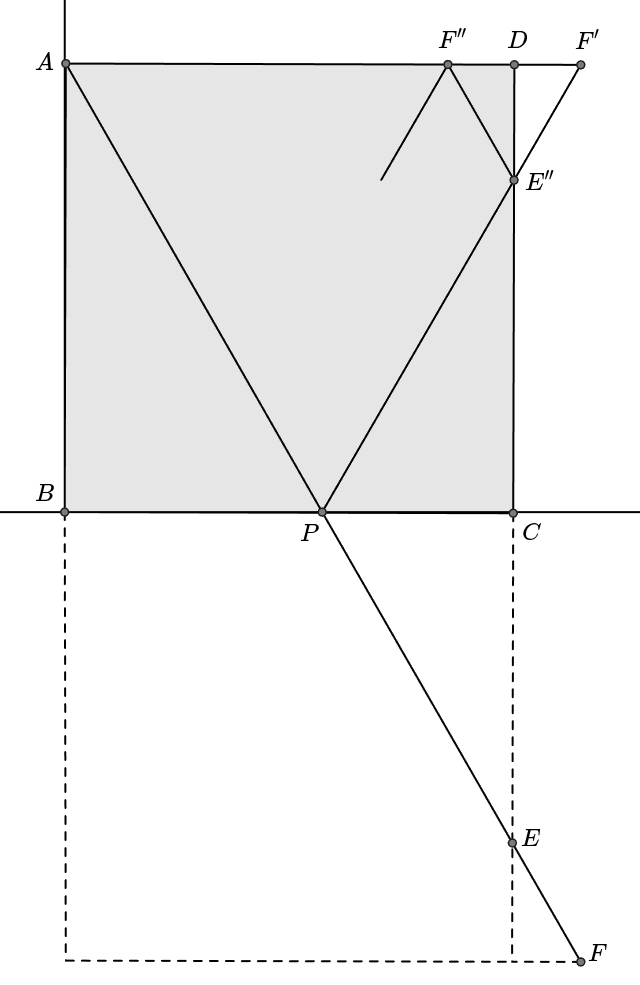015. Incidence of Rays to the Corner
Point on a square with one side length of moves in a straight line from point to point where . When point reaches one of the sides and continues its motion by reflecting, find all values of that allow point to reach any of the four corners , , , and .

If the path is expanded symmetrically with respect to the sides of the square as follows, expands to , expands to , and expands to , ultimately forming a straight line . When this path reaches a corner of a square, also passes through the grid point.

Let this grid point be where and are natural numbers. Then, the line equation of is . Therefore, when , , which implies is a rational number.
Meanwhile, for any rational number such that , there exist natural numbers and that satisfy . This is because if where is a natural number, then since , as such . That is, is a natural number greater than or equal to , and can be replaced with . Here, passes through , so to be found is all positive rational numbers less than .
